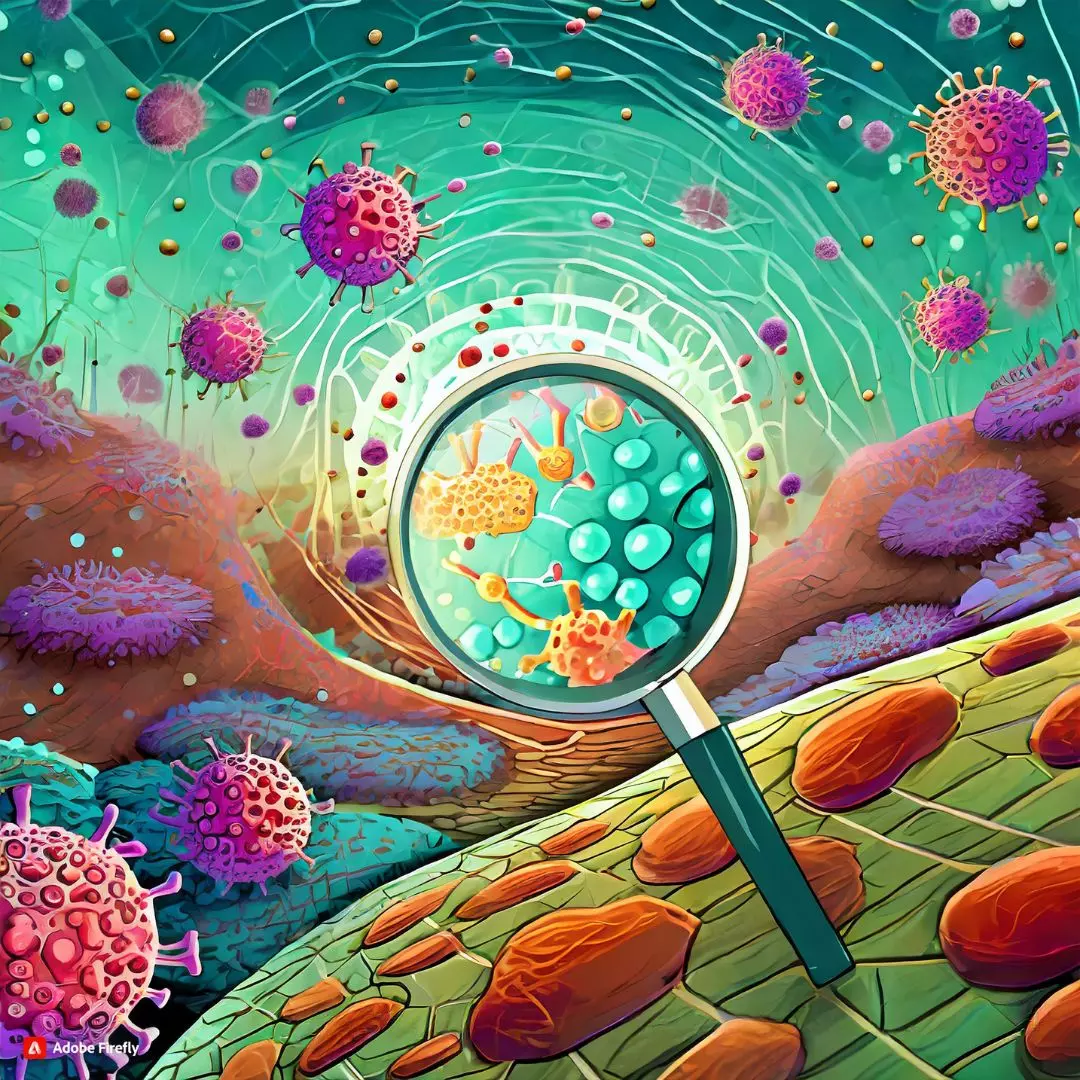
Image Credit: Adobe Firefly
Breakthrough Discovery Reveals Hidden Reservoir Of COVID-19 Virus In Human Cells
India, 14 Dec 2023 11:00 AM GMT
Editor : Ankita Singh |
A literature lover who likes delving deeper into a wide range of societal issues and expresses her opinions about the same. Keeps looking for best-read recommendations while enjoying her coffee and tea.
Astonishingly, the researchers found that the RNA or genetic material of SARS-CoV-2 was present in the EVs of individuals who had previously tested negative using standard RT-PCR methods.
In a groundbreaking development, researchers at the Institute of Liver and Biliary Sciences, New Delhi, have unveiled a potential hidden reservoir of the SARS-CoV-2 virus within the cells of the human body. This discovery may shed light on the virus's persistence and reoccurrence, challenging conventional notions about COVID-19 diagnostics.
The focal point of the study was the exploration of extracellular vesicles (EVs), microscopic particles released by cells. Astonishingly, the researchers found that the RNA or genetic material of SARS-CoV-2 was present in the EVs of individuals who had previously tested negative using standard RT-PCR methods as reported by The Economic Times.
Lead author Sukriti Baweja emphasized the significance of this revelation, stating, "The identification of SARS-CoV-2 RNA in EVs underscores the need to explore alternative diagnostic methods that leverage this discovery, potentially revolutionizing our ability to detect and manage COVID-19 infections more effectively."
Even for individuals deemed virus-free by conventional tests, the presence of SARS-CoV-2 RNA within EVs suggests a potential source for recurrent infections, according to the researchers. In laboratory settings, infected EVs demonstrated the ability to transmit the virus to previously unaffected cells, pointing to a previously unrecognized route of transmission.
Published in the esteemed journal Liver Research, this finding holds promise in addressing the challenges faced in COVID-19 diagnosis and management, providing a potential paradigm shift in our understanding of the virus.
The researchers highlighted the limitations of current diagnostic tools, citing occasional false negatives due to factors such as sample collection technique and viral load. Detecting SARS-CoV-2 RNA within EVs might offer a more sensitive and rapid diagnostic approach, potentially aiding in identifying individuals with persistent or recurrent infections.
Crucially, the presence of SARS-CoV-2 RNA in EVs extends beyond respiratory samples to include plasma, offering new opportunities to understand the virus's behavior beyond the respiratory tract.
In conclusion, this breakthrough discovery not only deepens our understanding of the virus's elusive nature but also opens avenues for the development of more effective diagnostic methods. As the scientific community grapples with the complexities of COVID-19, this research marks a crucial step toward refining our strategies for detection and management.
Also Read: Global Diplomatic Shift: India's Move To Make AU A G20 Permanent Member Sparks UN Reform Calls
 All section
All section














